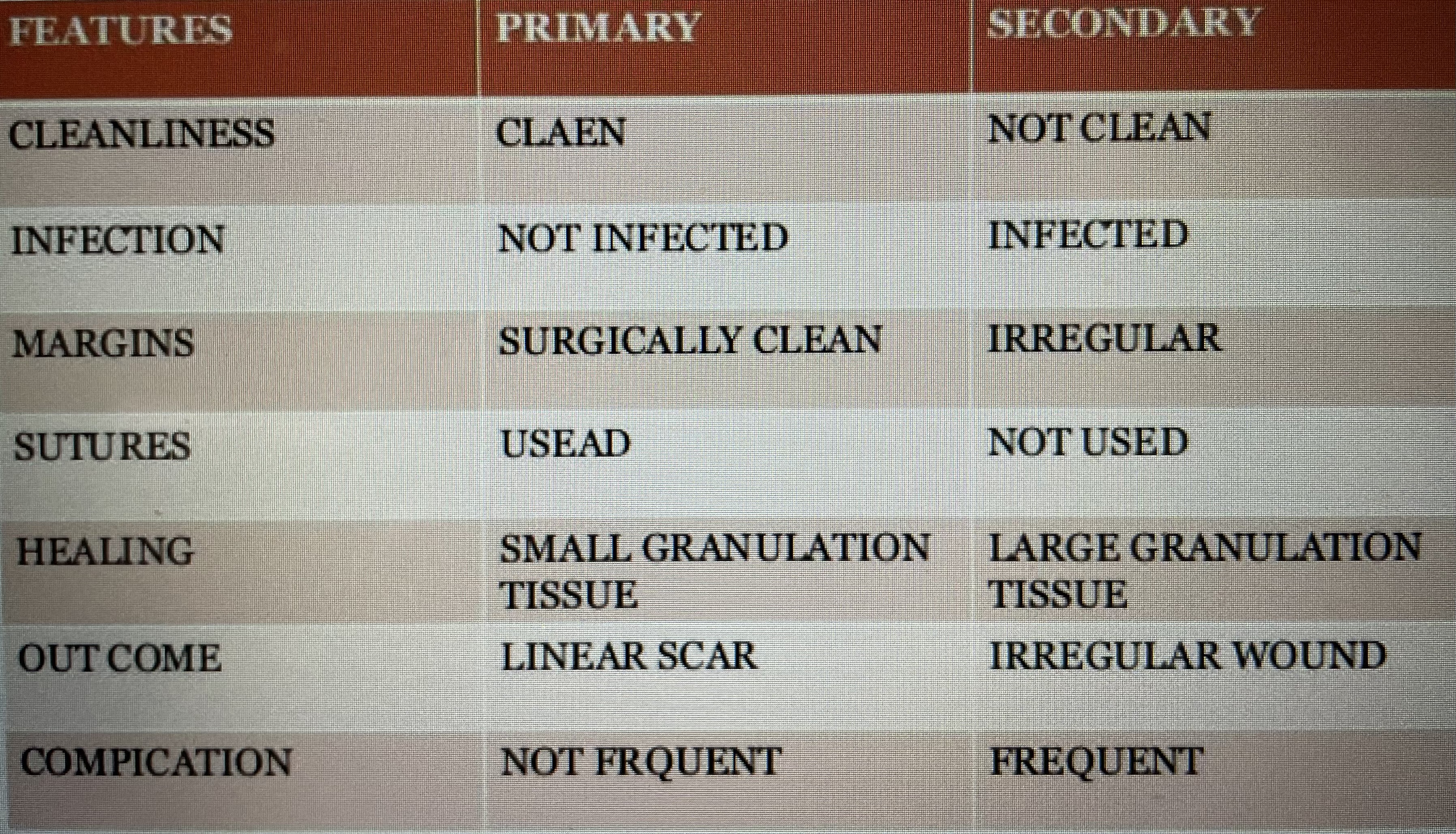Regeneration and repair
1/10
There's no tags or description
Looks like no tags are added yet.
Name | Mastery | Learn | Test | Matching | Spaced |
|---|
No study sessions yet.
11 Terms
Functional repair (regeneration) vs fibrous repair
Regeneration- the growth of cells and tissues to replace lost structures and recover normal function (no scar)
Repair- process where severely damaged/non-regenerable tissue is replaced by connective tissue → scar with loss of specialised function
What are the stages of wound healing
Haemostasis: vessels open → clot/ scan seals them close
Inflammation: cytokines released + phagocytosis
Proliferation: regrowth of structures by stem cells (regeneration and repair)
Remodelling: regaining function (scar disappearing)
What does granulation tissue consist of ?
endothelial cells and capillaries
Fibroblasts and my fibroblasts
Type I collagen
Chronic inflammatory cells
What is the function of granulation tissue?
fills the gap
Angiogenesis to supple o2 and nutrients (endothelial + progenitor cells)
Contact and close the wound (myofibroblasts)
Help restore lost tissue (parenchymal cells)
What are some complications of fibrous repair?
Insufficient fibrosis eg. Hernia, ulceration
Reproduction of fibre scar tissue → keloid scar
Excessive scar contraction → Obstruction of tubes/disfiguration
Formation of adhesions → compromise organ function/block tubes
Loss of function
Difference between primary(complete regeneration) and secondary intention (fibrous repair)

Systemic factors affecting regeneration and repair
age
Disease/ health eg. Diabetes, obesity
Drugs eg.steroids
Oxygen delivery eg. Anaemia, hypoxia
Malnutrition eg. Vit C deficiency, lack of protein
Local factors affecting regeneration and repair
type, size and location of wound
Blood supply
Local infection
Necrotic tissue
Mechanical stress/ physical factors: protection eg. Dressings , surgical technique
What is wallerian degeneration and why does it happen?
What is traumatic neuroma?
A benign growth of nerve tissue that occurs in response to injury
Process of bone fracture repair **
Haematoma fills the gap and surrounds the injury, inflammation
Granulation tissue forms: